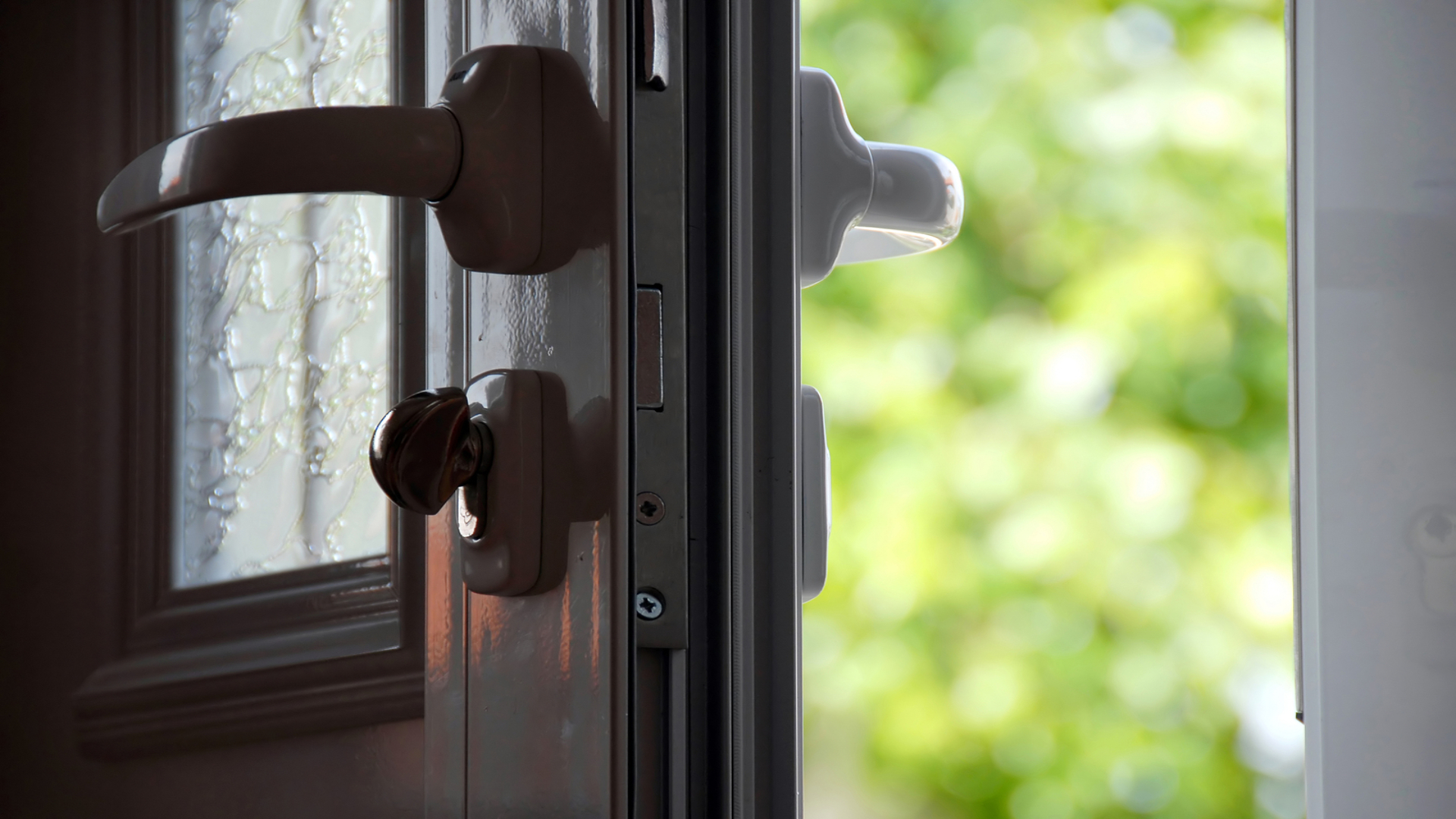
Everything you need to know about contact sensors
Contact sensors are security devices typically installed on doors and windows. They can notify you and your system in the event a door, window, or gate opens, or send an alert during an intrusion. And recent advancements in smart technology make contact sensors one of the most essential components of a home or business security system.
Contact sensors consist of a magnet and a sensor.
A contact sensor is a simple device made up of two components: a magnetic piece and a sensor body. The magnetic piece is attached to a door or window and the sensor body is attached to a door or window jamb.
When a door or window opens, the sensor’s magnetic field breaks. This break flips a switch in the sensor. The sensor transmits this information to the alarm panel, which then alerts you. This type of magnetically operated sensor is known as a reed switch.
All contact sensors work the same way, but they come in different shapes and sizes, depending on the application.
| Sensor Type: | Used On: |
| Surface mount contact sensor | Doors, windows, and drawers |
| Overhead door contact sensor | Garage doors and commercial bay doors |
| Pull apart contact sensor | Sliding doors and sliding gates |
The most common type of contact sensor is wireless, but wired contact sensors are also available.
Z-Wave-enabled contact sensors transmit alerts wirelessly to the control panel. You can control Z-Wave-enabled contact sensors from an app on your phone.
Wireless contact sensors use AA and AAA batteries. Battery status is available in the smartphone app, making it easy for you to replace them as needed .

You can also choose wired sensors. Wired contact sensors transmit data directly to the alarm control panel via the connecting wires and do not come with a smart home interface. These wires also supply power, meaning no batteries are necessary.
A contact sensor is one of the easier security devices to install.
A contact sensor will come with installation instructions and either mounting screws or double-sided tape. You must install the sensor body and magnet at the same time to ensure the magnet aligns with the sensor in the closed position. Typically, the gap between the sensor and the magnet must be no more than 0.4 inches (10 millimeters). You can install a sensor in a vertical or horizontal orientation.
Once installed, the next step is to connect the sensor to the alarm control panel. This step depends upon the sensor model and alarm system. Some alarm systems or home automation hubs have an “Inclusion” mode. You need to activate Inclusion mode to add new security devices to the system. Should you need to remove the contact sensor from your security system, you will need to put the system into “Exclusion” mode.
You may need to consult their alarm system guide or contact their alarm system installer to learn how to activate Inclusion and Exclusion modes.
You can install contact sensors on doors, windows, gates, garages, and even drawers.
Intruders commonly break into homes and businesses through doors and windows. This is why most people install contact sensors on doors and windows. But contact sensors are versatile and can be used in many other places as well.
Garage doors. Overhead door contact sensors are used on large garage doors. These contacts allow for a larger gap between the magnet and sensor to eliminate the chance of a false alarm. Contact sensors on garage doors are good if you are nervous about car theft. On the commercial side, mechanic shops and car dealerships can also benefit from the extra protection.
Gates: Gates, such as side yard gates or pool gates, are great locations for contact sensors. Contact sensors installed on pool gates offer parents peace of mind. Even homeowners without children can use contact sensors on side yard or pool gates to ensure nobody is entering their yard without permission.
Drawers and cabinets: Though far less conventional, some people install contact sensors on drawers and cabinets. These drawers typically house important and expensive items, like jewelry.
You can configure sensors to activate an alarm only when armed or every time a door or window is opened.
Some people open and close their windows and doors dozens of times per day. If the sensors are always armed, they will trigger a barrage of alarm alerts. Many choose to arm their contact sensors along with their alarm system. That is, the contact sensors will only trigger an alert if the alarm system is armed. Most people only arm their alarm system when away or during the night. If a contact sensor triggers only when armed, it is more than likely a real emergency.
Other people may want the contact sensor to trigger even if the alarm is not activated. Many contact sensors have an “always-on” mode, which sends an alert every time a door or window opens.
Contact sensors provide additional security and are easy to use.
To recap, here are a few key benefits of contact sensors:
- Trigger the alarm at the first sign of intrusion.
- Connect to smart home systems and/or security alarm control panels.
- Send security alerts to your phone.
- Can be used on windows, doors, garages, or anything that opens and closes.
Contact sensors may not come to mind as essential security devices—but they are! At Bay Alarm, we know that true security requires many systems and features working together. We can work with you to determine the solutions and technology that work best for your home or business, including contact sensors. Get in touch today if you have questions about contact sensors or want a security system quote.

